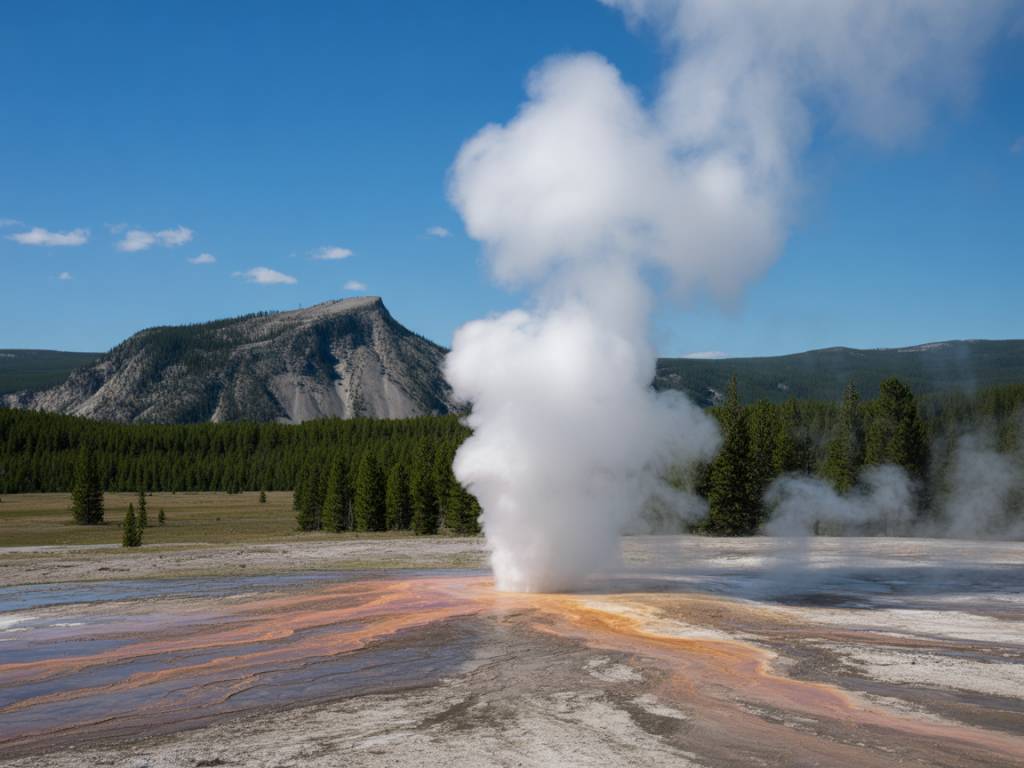The Northern Lights in Yellowstone: A Rare Celestial Event
When most people think of Yellowstone National Park, they conjure images of geysers erupting with steam, herds of bison crossing rolling plains, or the rainbow hues of Grand Prismatic Spring. But there’s another, lesser-known natural wonder that occasionally makes an appearance in this iconic landscape: the aurora borealis, or Northern Lights. Witnessing this celestial dance above Yellowstone’s rugged wilderness is a rare but unforgettable experience—and for photographers, it’s the ultimate challenge and reward.
Can You Really See the Northern Lights in Yellowstone?
Surprisingly to many, the answer is yes. While Yellowstone lies far south of the Arctic Circle, where auroras are more commonly observed, strong geomagnetic storms can push the northern lights deep into the continental U.S.—and that includes parts of Wyoming and Montana. Still, the occurrences are relatively infrequent and often subtle here, typically appearing as soft green glows or faint bands across the northern horizon.
What makes Yellowstone special, however, is the setting. Imagine the night sky ablaze with emerald arcs above steaming geothermal basins, snow-capped peaks, and expansive high-elevation valleys. The ephemeral glow of the aurora reflected in the pools of Norris Geyser Basin or illuminating Lone Star Geyser adds an otherworldly dimension that few places on Earth can offer.
What Causes the Aurora Borealis?
The aurora borealis is a product of solar activity. When charged particles from the sun reach Earth’s magnetic field, they collide with gases in the atmosphere, typically oxygen and nitrogen. These interactions generate radiating displays of light in varying colors. Green is the most common hue, but red, violet, and purple can also appear during stronger storms. The intensity and visibility of the aurora are measured using the Kp index—a scale from 0 to 9 indicating geomagnetic activity. For Yellowstone, a Kp level of 6 or higher generally offers a decent chance of seeing the lights.
When Are You Most Likely to See the Aurora in Yellowstone?
Timing is everything. The best chances occur during periods of strong solar activity, particularly around the equinoxes in March and September. However, active geomagnetic storms can take place year-round. Winter generally offers darker skies and fewer clouds, ideal for visibility, though tough weather conditions may limit access to key areas.
To increase your odds of witnessing the aurora in Yellowstone:
- Monitor space weather forecasts via NOAA’s Space Weather Prediction Center or aurora tracking apps like My Aurora Forecast and Aurora Alerts.
- Look for nights with a predicted Kp index above 6; higher is better.
- Choose moonless nights to minimize light pollution and enhance contrast.
- Be ready to wake up late or stay up early—auroras often peak between 10 p.m. and 2 a.m.
Best Locations in Yellowstone for Aurora Photography
Choosing the right location can be the difference between a faint glow and a spectacular photograph. As a landscape photographer, I recommend scouting spots that provide a clear view to the north, minimal artificial light, and an interesting foreground. Here are my personal favorites:
- Lamar Valley: Wide open and remote, Lamar Valley offers excellent views of the northern sky with very little light pollution. In winter, it becomes a majestic, frozen expanse, perfect for long exposures.
- Blacktail Plateau Drive: This lesser-traveled road provides elevated vantage points ideal for picking up light on the horizon. It’s usually accessible by snowshoe or skis in winter.
- Yellowstone Lake: The northern shoreline offers breathtaking reflections of the aurora on the water. During summer, it’s a peaceful and accessible spot for night photography.
- Mammoth Hot Springs Terraces: For those willing to play creatively with geothermal features and steam, this location can deliver uniquely atmospheric images.
Tips for Photographing the Aurora in Yellowstone
Photographing the aurora is an art form that demands patience, preparation, and a bit of luck. Here’s what you should keep in mind:
- Use a sturdy tripod: Long exposures are essential, and even the slightest movement will ruin your shot.
- Shoot in manual mode: Manually control ISO, shutter speed, and aperture. A typical starting point: ISO 1600–3200, shutter speed between 5–20 seconds, aperture as wide as your lens allows (f/2.8 or lower).
- White balance: Setting your white balance manually to “daylight” can yield more natural aurora colors compared to auto settings.
- Focus manually: Autofocus systems often fail in low light. Pre-focus during daylight or use live view to focus on a distant star.
- Include a foreground: Geothermal features, silhouettes of trees, or flowing rivers provide context and enhance the composition.
Staying Safe and Responsible
Yellowstone is a wild and sometimes perilous place, especially at night. Wildlife roams freely, and thermal areas can be unstable off-trail. Pack headlamps with red light settings, always stay on designated paths, and bring a GPS or topographic map if venturing into less-trafficked areas. Winter stargazing can be bone-chilling, with temperatures often dipping below zero, so dress in layers, bring extra batteries (they deplete quickly in the cold), and notify someone of your plans.
Be mindful, too, that Yellowstone is a sacred place for many. Tread lightly, follow Leave No Trace principles, and avoid shining bright lights into thermal features or disturbing nocturnal wildlife.
Is It Worth the Wait?
Absolutely—if you’re lucky enough to catch the aurora dancing above Yellowstone, it’s a photographic moment that can rival the world’s most iconic shots. Admittedly, it requires strategic planning, deep patience, and a bit of fortune. But when those emerald ribbons illuminate the night sky over Yellowstone’s geothermal wonderland, the reward is beyond the frame—it’s spiritual.
For me, the experience goes beyond photography. It’s about being enveloped in silence, standing under a river of light, and feeling—for a few fleeting moments—that you are part of something truly cosmic. Whether you’re a night-sky aficionado, a dedicated landscape photographer, or simply a lover of rare natural events, the northern lights in Yellowstone are worth dreaming about—and even more worth chasing.
